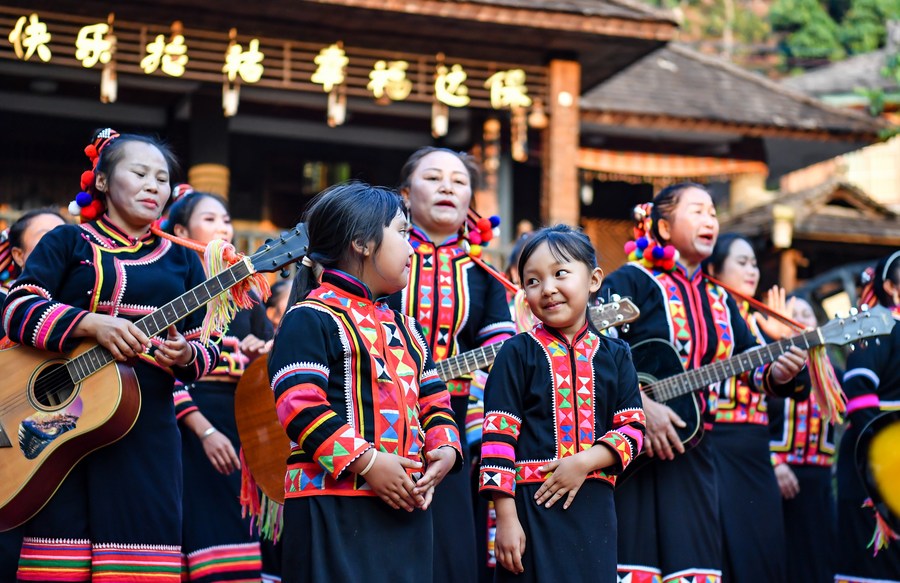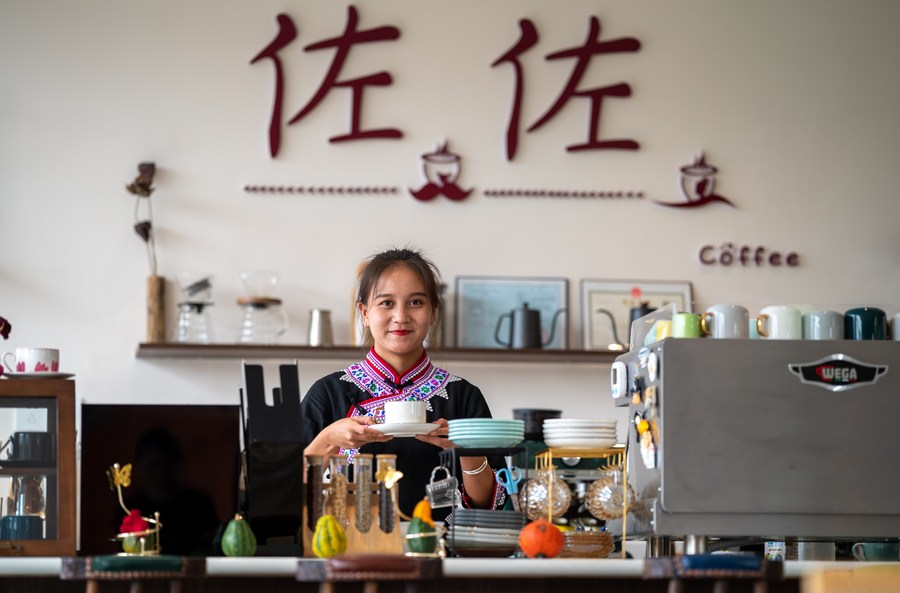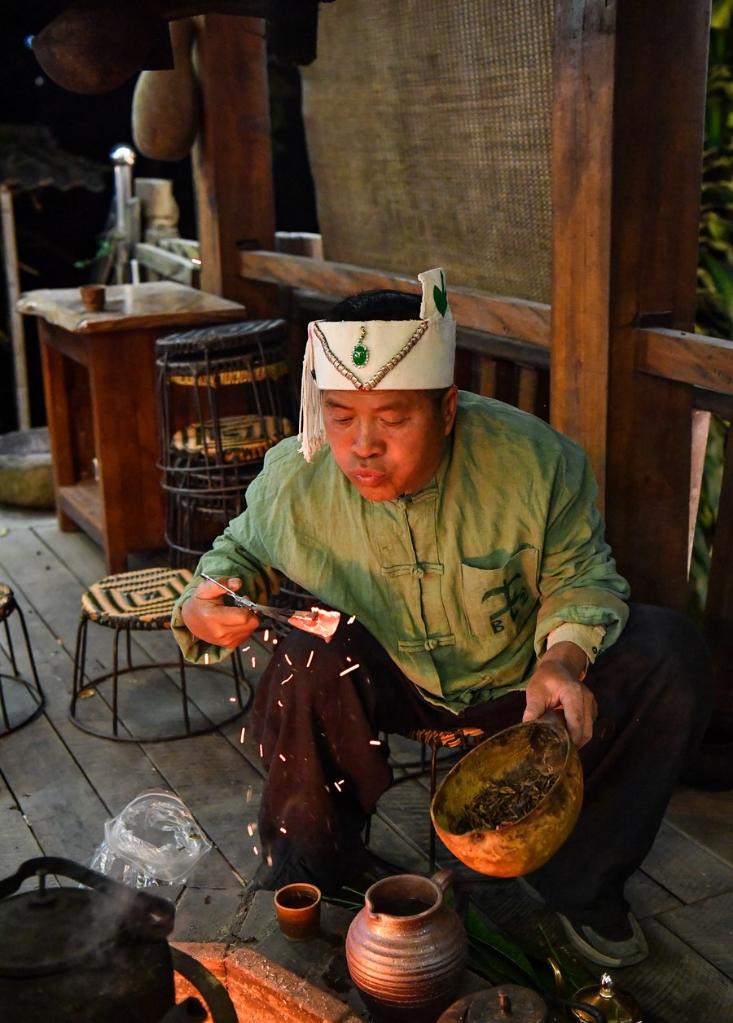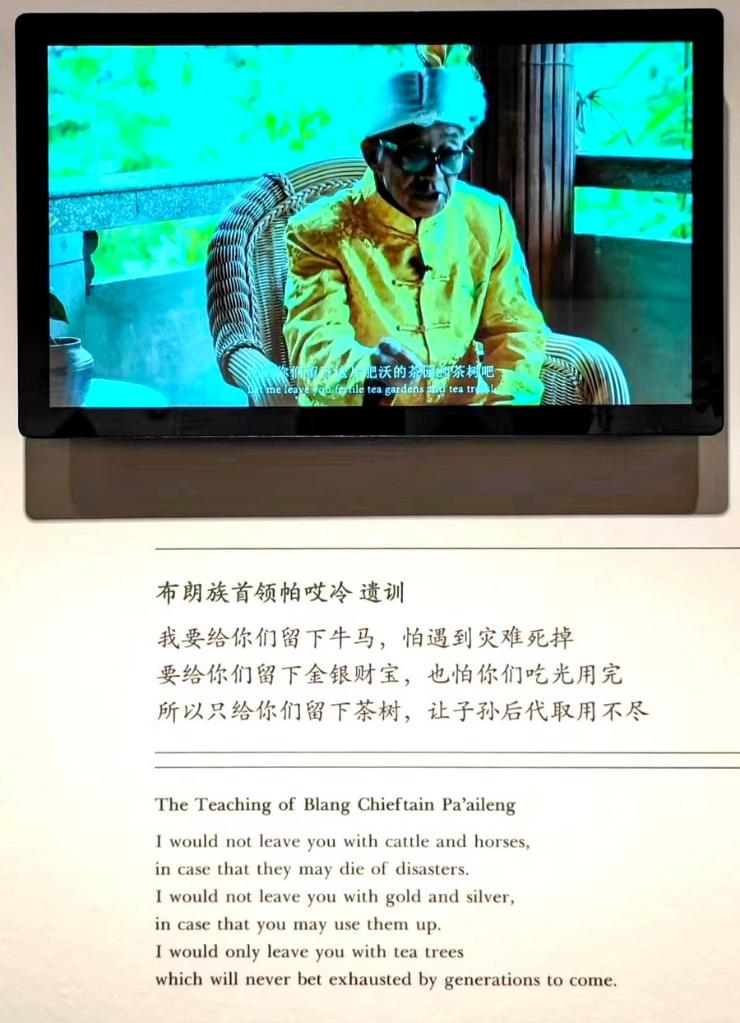* In the course of China's modernization drive, ethnic minorities are rediscovering their traditions and creating a better life by tapping into their unique development potential. * The successes of cultural tourism and agricultural industries in Yunnan Province suggest that traditions and the quest for modernity need not to be in conflict. Modern development is making ancient ethnic cultures more contemporary and breathing new life into their inheritances. Villagers perform in Laodabao Village of Lancang Lahu Autonomous County in Pu'er City, southwest China's Yunnan Province, Feb. 9, 2023. (Xinhua/Ban Wei) KUNMING, Feb. 22 (Xinhua) -- The ethnic Lahu people in the village of Laodabao have long cherished singing and dancing purely as a form of entertainment, but now their artistic flair is resulting in a windfall of fortune for the once impoverished village. Nestled in the mountainous Pu'er region of Yunnan Province in southwest China, the village was previously plagued by poverty, with roughly 80 percent of its population living below the country's poverty line a decade ago. Faced with hardships, music provided solace to the villagers. In the absence of electricity to illuminate the village at night, they would gather around a bonfire to sing, dance, and play musical instruments. As a child, Li Naluo, now 39, learned to play the guitar and occasionally traveled outside the village with her father to perform. Motivated by China's poverty alleviation campaign, Li took the lead to establish a performing arts company in 2013 to engage more than 200 villagers of different ages with an aim of improving their income. Since its establishment, the company has performed on more than 960 occasions in the village, in front of a total of over 153,000 visitors, generating an income of more than 4.75 million yuan (about 688,750 U.S. dollars). Performing their cultural songs and dances for visitors from across the country has become a part of the villagers' routine and they have also taken their performances to stages in big Chinese cities and even abroad. "Sometimes when I am doing farm work, I suddenly get a call asking me to perform. I then rush home and put on my costume. Once the singing is done, I go back to the fields to work," said Li Shikai, Naluo's father. The transformation seen in Laodabao is a shared experience in Pu'er, a border city inhabited by 26 different ethnic groups. In the course of China's modernization drive, ethnic minorities are rediscovering their traditions and are creating a better life by tapping into their unique development potential. Young performers are seen in Banli Village of Donghui Town, Lancang Lahu Autonomous County in Pu'er City, southwest China's Yunnan Province, July 6, 2022. (Xinhua/Jiang Wenyao) DRAWING STRENGTH FROM THE PAST For the villagers, their traditions are what make them unique, giving them a comparative advantage in embracing the market economy. Banli, another Lahu ethnic minority village in Pu'er, has been turning its distinctive dancing culture into an invaluable tourism asset. The village now has its own performing arts company famous for the "swing dance," a traditional Lahu dance featuring movements described as gentle, neat and graceful, while also involving a degree of stretching. China is experiencing a rural tourism boom, with many urban dwellers choosing to visit the countryside for a taste of a more simple lifestyle. The vibrant dances and music, as well as traditional Lahu architecture in Banli, are attracting curious visitors from near and far. Villager Ge Nasi returned to Banli to run a coffee shop after graduating from college in 2021. The cafe, built in the shape of a stilted house, a kind of traditional dwelling of the local Lahu people, has become a tourist attraction in itself. "The cafe was packed with customers during the recent Spring Festival holiday and made a revenue of around 4,000 yuan per day," said the 25-year-old barista. Villager Ge Nasi makes a cup of coffee at her coffee shop in Banli Village of Donghui Town, Lancang Lahu Autonomous County in Pu'er City, southwest China's Yunnan Province, July 7, 2022. (Xinhua/Jiang Wenyao) Besides tapping into ethnic cultures, Pu'er has also discovered new opportunities resulting from the traditional tea planting. At Jingmai, a lush mountain known for its forests of ancient tea trees, local ethnic groups such as the Blang and the Dai have regarded tea as an integral part of their lives since ancient times. Locals there still maintain an ancient way of tea cultivation featuring a special multi-layered ecosystem. The ancient tea forests are now glowing with new vitality as the younger generations are introducing new ideas aimed at better developing the tea industry in this area. Xian Gong, 38, launched a farmers' cooperative in 2010 in her hometown of Jingmai Village. Later on, she established a company that integrates the cooperative, a tea factory, a hostel and a shop. Today, tea gardens under the cooperative cover an area of more than 9,000 mu (600 hectares) and generate an annual output of more than 200 tonnes, helping nearly 500 households increase incomes. More villagers have joined the league in setting up cooperatives, tea factories and homestays. Some of them rapidly catch up with new fads -- selling tea through live streaming, or sharing details of their lives and work on the social networking application WeChat. "Tea mountain is the most valuable legacy left by our ancestors, and it is the due responsibility of our young people to protect and make good use of it," Xian Gong said. Villager Nan Kang bakes tea around the fireplace in Mangjing Village of Lancang Lahu Autonomous County in Pu'er City, southwest China's Yunnan Province, Feb. 9, 2023. (Xinhua/Ban Wei) A BETTER FUTURE WITH INHERITANCES For the locals, their traditions and the quest for modernity need not to be in conflict. Modern development is making their unique cultures more contemporary and providing them with greater access to the outside world, breathing new life into the inheritances of ancient ethnic cultures. In the villages of Banli and Laodabao, extra income from cultural tourism prompted renewed interest in centuries-old music and handicrafts. The four newly established performance teams in Banli, consisting of 200 villagers-turned-dancers and reed-pipe players, are choreographing new dances to tell stories of their daily work and lives. Li Naluo, in Laodabao, also has a new mission of training more singers of Mupamipa, the Lahu epic of creation that lacks written transcripts and relies purely on oral transmission. Li trekked across mountains to find one of the few elderly singers who can chant the entire Mupamipa. After learning the masterwork, Li now teaches other villagers how to reproduce the epic in chorus and group dances. "Due to social changes and difficulties in inheritance, very few Lahu people can sing the full version of Mupamipa. We're trying to change this dangerous lack of inheritors," said Li. The modern tea industry boom also led the locals at Jingmai to rediscover the wisdom of their ancestors and better protect their ancient tea forests.Decades ago, in a bid to increase yield, the villagers started to plant tea trees densely on the terraces, said 61-year-old Nan Kang, in Mangjing, a village tucked away on the tea mountain. However, the villagers found that the tea grown on the terraced lands was not as good as that from the ancient tea forest, so they started to learn from their ancestors' farming practices by interplanting tea bushes, trees and grass plants, transforming the terraces into eco-friendly tea gardens. This mixed planting technique ensured better allocation of light and nutrients, and through the interplay of forest biodiversity and insect biological control, pest populations were reduced and the quality of tea improved. Now Jingmai is known for its high-quality tea, both from the ancient tea forests and tea gardens applying the traditional way of planting. This photo taken on Feb. 9, 2023 shows the teaching of a legendary Blang ancestor displayed at an ancient tea forests culture exhibition center in Jingmai Mountain, Pu'er City, southwest China's Yunnan Province. (Xinhua/Ban Wei) "We now better understand the teaching of a legendary Blang ancestor," said Xiong Dengkui, an associate researcher with the Lancang county museum. "The chieftain said all the treasures will be used up, and that only the tea forest will unfailingly provide for the offspring." (Reporting by Ban Wei, Ji Zhepeng, Wang Jian, Yao Yuan; Video reporters: He Chunhao, Sun Min; Video editors: Zhang Yucheng, Luo Hui, Cao Ying, Liu Ruoshi, Lin Lin)■




Interplay between traditional and modern enriches lives of China's minorities
Editor:谭婕倪
Source:Xinhua
Updated:2023-02-23 09:34:23
Source:Xinhua
Updated:2023-02-23 09:34:23
Special
Contact
Welcome to English Channel! Any suggestion, welcome.Tel:0731-82965627
lisl@rednet.cn
zhouqian@rednet.cn











